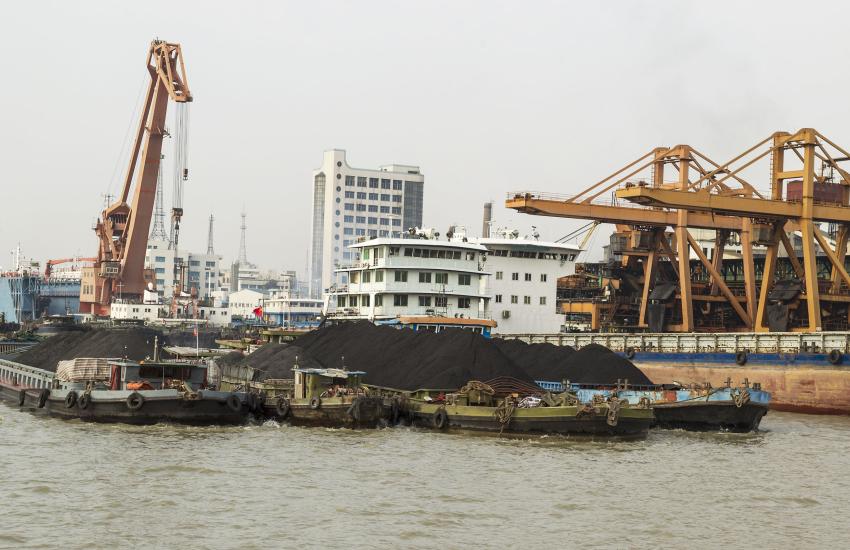The Chip Deception: China’s Growing Leverage and America’s Onshoring Quest
The United States is increasingly vulnerable to Chinese dominance over rare earths by onshoring semiconductor supply chains, especially sophisticated components for advanced artificial intelligence (AI).
Critical minerals, as defined by the U.S. Geological Survey (USGS), play a crucial role in semiconductor production due to their indispensable contribution to the manufacturing processes essential for electronic components and advanced technologies.
All elements necessary to produce chips are on this list, and one country dominates this commodity supply chain.
“China has a very dominant position in many of these materials,” said Zach Collier, assistant professor of management at Radford University.
Production was 43,000 metric tons of rare earth oxides in the United States in 2021, according to USGS data. China produced 168,000 tons.
Reserves in the United States were estimated at 1.8 million tons of rare earth oxide in the same period, China had 44 million.
Still, China is not a global supplier because its territory has many of these resources but also because a combination of technical knowledge, subsidies, economies of scale, overseas investments and environmental damage tolerance have propelled the country to its position.
“They’ve made investments to really secure both the actual mined mineral supply chain, but the real key is the processing of those minerals and the [intellectual property],” said Keith Norman, chief sustainability officer at Lyten.
Beijing’s supremacy as the most prominent refiner and seller of raw materials necessary to produce high-end technology has been widely documented.
Many of these strategic raw materials go into semiconductors and, especially, those that power the artificial intelligence revolution.
“For raw computing power, you need chips and actually, in those cases, quite specialized high-tech chips,” said Collier, a specialist in supply chains and technology.

These AI semiconductors demand more complex compounds to work in higher temperatures.
“We need big server farms, which need to stay cool, but they need to be high performance. The hunger for speed and performance is ever-increasing,” said Jürgen Riedel, founder of AI researcher Baiomics. This means that components must be made to withstand increasing demands and hostile environments, as keeping them at appropriate temperatures is challenging.
At the center of the AI chip supply chain are neodymium, cerium and praseodymium; gallium and germanium are also necessary for semiconductors. These rare earths are mainly produced by China and Australia, and as server farms grow in scale and complexity, these raw materials will only gain interest.
Arafura Rare Earths explores and develops these minerals in Australia and estimates that due to the ongoing AI revolution, the demand for its commodities will jump from 167,000 tons in 2020 to 280,000 a decade later.
China’s domination and power over these raw materials results from a carefully executed strategy.
“It turns out that many of these so-called critical materials are found in many other places,” Collier told SIGNAL Media in an interview.
Rare earths and critical mineral deposits are not restricted to one country in the world. The advantage China brings is in one key area.
“It takes a lot of manpower to turn [ore] into something usable,” Collier said.
Together with labor and expertise, there are other issues.
“It’s not only the environmental impact but also the impact on social communities because people are being displaced from their lands because mining companies need to really transform whole villages and areas,” Riedel said.
Therefore, producing these relatively abundant raw materials is a challenge for societies seeking higher standards of living.
“It might be more cost-effective to outsource the production of some of this stuff over the years, and the problem then that you run into is if you outsource too much, then you find yourself in a vulnerable position because you know you’re reliant on the supplier to provide that supply,” Collier said.
“That’s sort of the dynamics. There’s reasons that cost basically comes down to sort of economic and regulatory [issues],” he added.
Efforts by the U.S. Department of Defense to onshore these supply chains were financed by $439 million of investments in this sector since 2020, according to a release. Similar programs were established by the European Union and Japan.
A mining company seeks approvals to explore rare earths in Nevada. American Rare Earths, an Australian miner prospecting in the Midwest, has recently announced that a site in Nevada has potential and will continue on-site work toward establishing a major rare earths mine, pending private funding, for $456 million.
Attempts to contact American Rare Earths company were unsuccessful.
Efforts to control larger portions of the supply chain are relevant not only to ensure an edge in AI-enabling chips but also on other semiconductors that are part of the AI ecosystem. For example, the components for Internet of Things devices also require less sophisticated technologies, but their use is part of a larger concert of capabilities.
“It is the truth that chips are getting more advanced, and they’re using maybe different mixes of materials than they had in the past. But I think the bigger thing to keep in mind is just that more things are using chips in general, whether they’re the advanced chips or the less advanced chips,” Collier said.
Integrating supply chains among friendly nations and investing overseas where necessary, is the next challenge for the defense industry once raw materials risks are mitigated. As the United States continues its efforts through programs and subsidies, bottlenecks appear elsewhere.
“A supply chain sometimes implies a sense that it’s very linear, especially with things like semiconductor manufacturing. It’s really a tangled web; it’s an ecosystem,” Collier said.






Comments